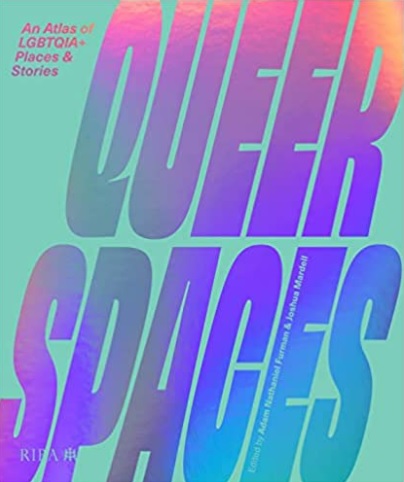Queer Spaces: an atlas of LGBTQIAplus places and stories
Queer Spaces: an atlas of LGBTQIA+ places and stories, Edited by Adam Nathaniel Furman and Joshua Mardell, RIBA Publishing, 2022, 228 pages, numerous colour and black and white illustrations.
Fonthill Abbey, William Beckford’s glorious neo-gothic fantasy castle, although no longer standing, is well known to conservationists. Designed by James Wyatt, it was where the wealthy aesthete, flush with family money from slave plantations in the Caribbean, vainly hoped to secure social redemption for his ‘sodomite’ transgressions. It is but one of almost 100 buildings and places from across the world featured in this intriguing book. The spaces vary widely: from Ludwig II’s palaces in Bavaria to working-class terraced houses in Sheffield; from a Hijra community collective in Dhaka, Bangladesh, which gives sanctuary to gender nonconforming people rejected by their families, to Holy Trinity Church in York, where Anne Lister, a lesbian landowner, and Ann Walker, her lover, celebrated their union on Easter Sunday in 1834.
Some of the entries describe the architecture, for others the emphasis is on social life, though the constraints on queerness, particularly in countries where homosexuality and divergent gender expression are still illegal and subject to harsh sanctions, pose problems about disclosure. It is therefore remarkable that the editors have obtained articles from countries such as Brazil, Nicaragua and Singapore, where hostile political systems still lead to repression. There is no representation from Russia or China, and apart from South Africa, which is well covered, the only account from the African continent is Sappho Islands, a queer bar that lasted for one year in Uganda, perhaps the most violently homophobic regime in the world.
Although discrimination and prejudice are still commonplace, the stories that are told are mostly those of positive activism and community building. Among the most joyous is Theatron in Bogotá, Colombia, which has 13 interconnected spaces including theatre, bars, restaurants, clubs and discos. It has helped to form a gay neighbourhood where the LBGTQ+ community is free from aggression.
The Royal Vauxhall Tavern, London, built in 1862 (which featured in the recent Channel 4 TV documentary Freedom: 50 years of pride), has been associated with sexual and gender diversity since the 1940s. It was remodelled for drag performances and cabarets in the early 1980s. When it was threatened with closure in 2014, a campaign group succeeded in getting it listed as the first UK building to be recognised for its importance as ‘a noted performance space and LGB&T venue’. On the other hand, the London Lesbian and Gay Centre, which was supported by Ken Livingstone’s GLC, was closed down after attacks from Margaret Thatcher’s homophobic government, as was the GLC itself.
One of several historical, but little known, survivals featured in the book is the Temple de l’Amitié, a stone peristyle temple built for Freemasons around 1820, which stood in the garden of Natalie Barney’s house in 1920s Paris. An American lesbian hostess, Barney entertained writers, artists, bohemians and homosexuals. One of these was Truman Capote who, struck by the eclectic contents of her studio, described it as ‘the all-time ultimate gallery of famous dykes… an international daisy-chain.’
The RIBA is to be commended for publishing this pioneering book. Queer Spaces is both scholarly and engaging, a celebration as well as a call for tolerance and equality. Superbly illustrated, it casts a wide spectrum on diversity in the domestic, community and urban environments. The stories it tells of resilience and liberation teach us much about the struggles of the past, and how to create a more humane and inclusive society in the future.
This article originally appeared as ‘Resilience and liberation’ in the Institute of Historic Building Conservation’s (IHBC’s) Context 173, published in September 2022. It was written by Peter de Figueiredo, reviews editor of Context.
--Institute of Historic Building Conservation







